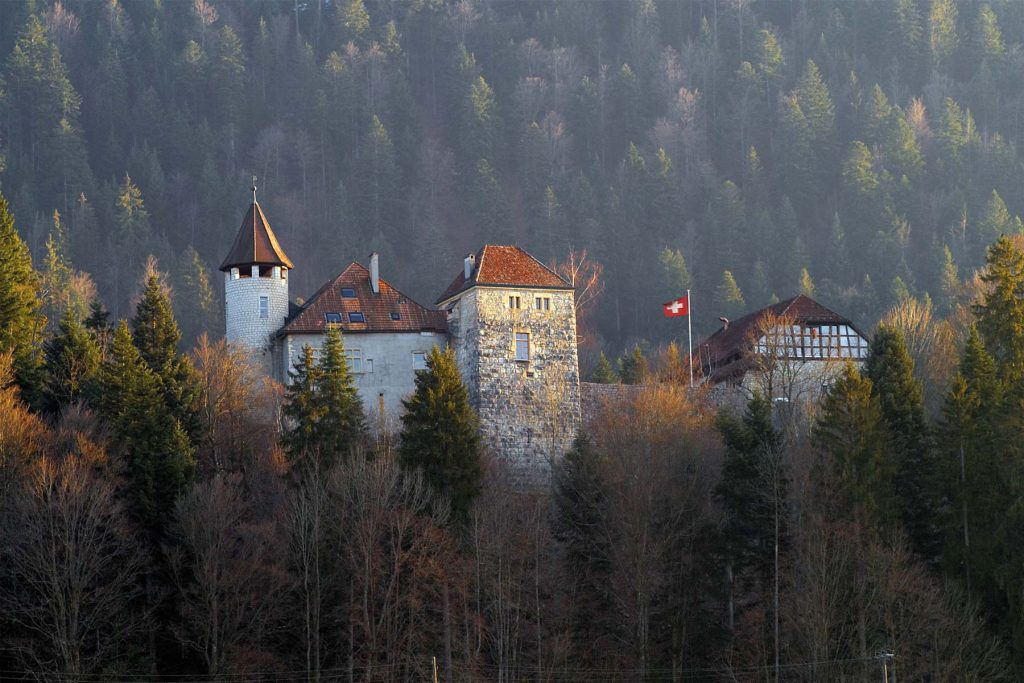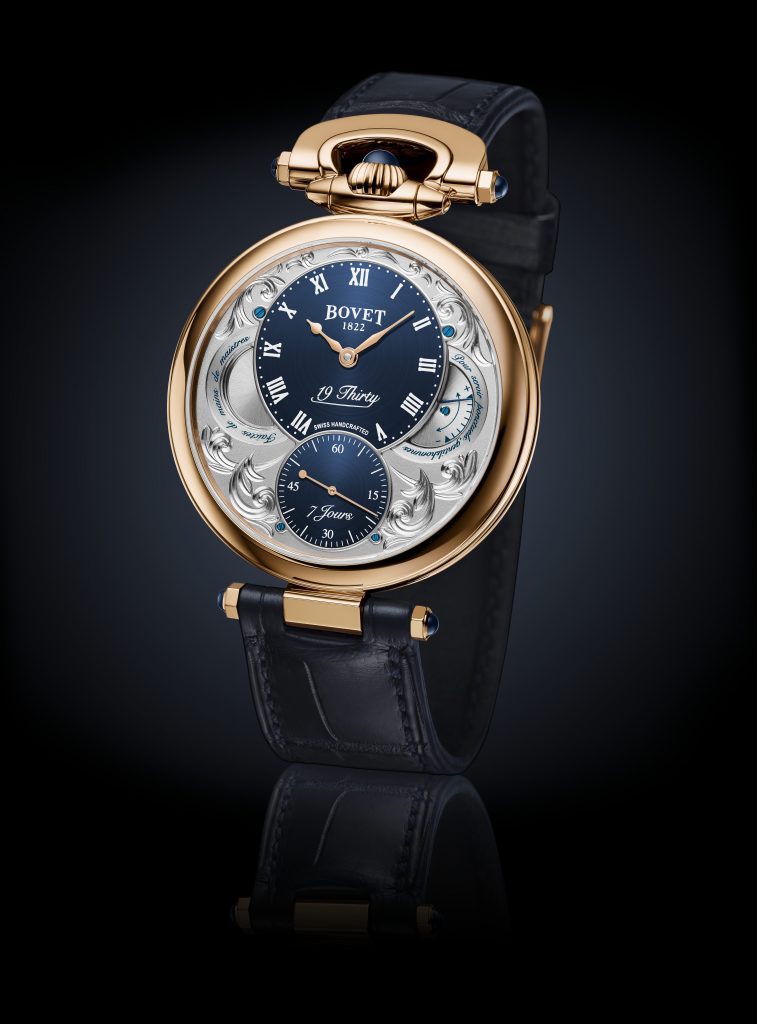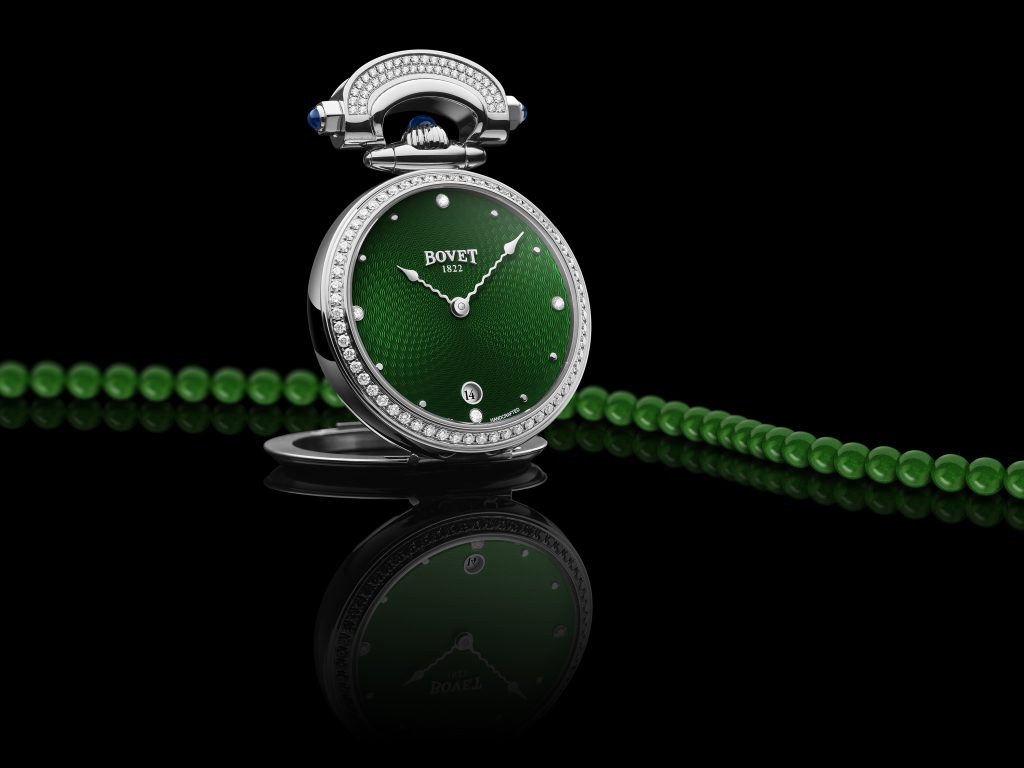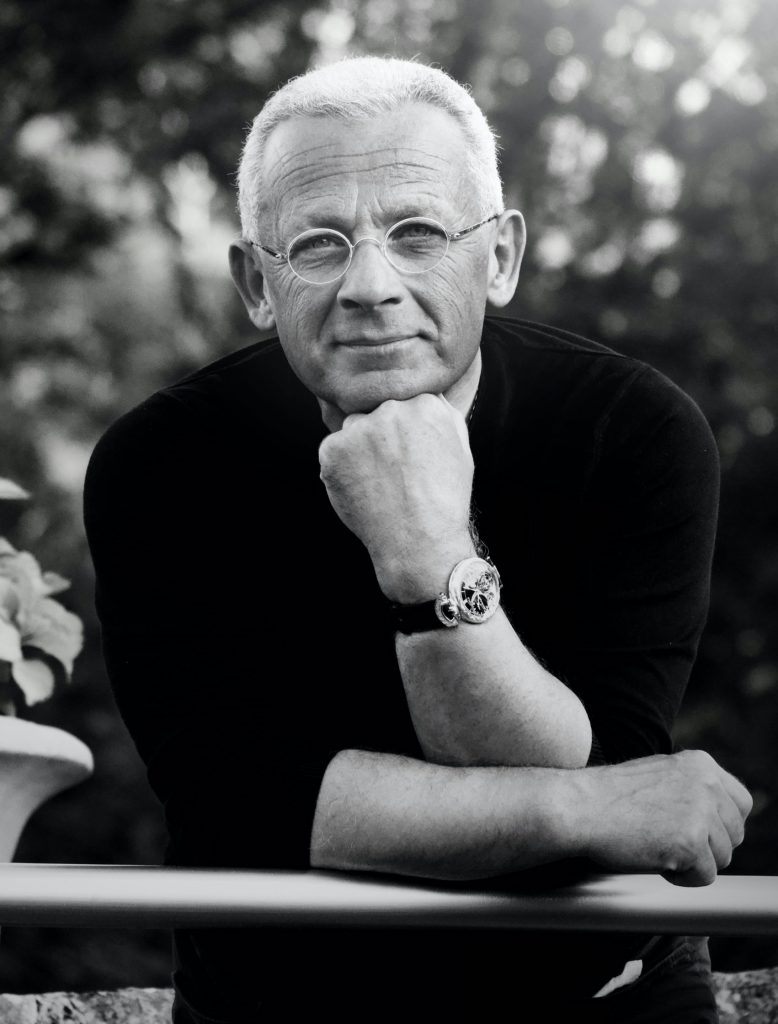It doesn’t get much more picturesque or storybook perfect than this — the House of BOVET, founded in 1822, has its headquarters in an actual 14th-century castle in the legendary Val-de-Travers, Switzerland, the cradle of high watchmaking.
Wait, it gets better.
The Chateau de Môtiers was once actually owned by the Bovet family. Fleurier, the village visible from the ramparts of the castle, is where the Bovet dynasty was born.
BRIEF HISTORY
The brothers Bovet, Edouard, Alphonse, and Frederic, were raised in a watchmaking family. Edouard went to London to work for a watchmaking sales company (London was the center of watchmaking commerce back then) and made his first trip to China in 1818, carrying four Swiss pocket watches that he sold almost immediately for the equivalent of $1 million.
Edouard came back to London convinced that the Chinese market was the future — the Chinese loved high-quality objects and were particularly enamored of timepieces from Switzerland. Together with his brothers Alphonse and Frederic, Edouard founded BOVET in 1822 specifically to serve the Chinese market. They built a factory in Fleurier and specialized in the “China Watch,” a highly decorated, inside and out, pocket watch, often sold in pairs.
BOVET became so successful, the word “Bovet” (播喴 in Chinese) became another term for watch in the Chinese language (like “Xerox” become synonymous with the copier).
BOVET provided timepieces to the Emperor of China, members of the court, noble families, wealthy collectors, and more. The Chinese, then and now, love beautiful objects, and the timepieces BOVET produced were the finest examples of decorative high watchmaking. BOVET’s success quickly spread throughout Asia and Europe, including the Ottoman Empire. In fact, BOVET timepieces can be found in museums throughout the world, including the Forbidden City, the Macau Timepiece Museum, the International Watch Museum in Chaux-de-Fonds, Switzerland, MOMA, and many more.
BOVET wasn’t content to just produce beautiful timepieces — the House was keen to innovate, including being the first brand to use an exhibition caseback (a standard in high watchmaking today), holding the world record for power reserve (370 days with a timepiece from 1910), developing unique chronographs, creating an Easel Watch (which would lay the groundwork for the patented Amadeo convertible system used today), and much more.
The House of BOVET artfully combines the most sophisticated mechanisms with the highest craftsmanship, employing artisanal techniques such as hand-engraving, enamel work, and miniature painting. For nearly 200 years, the House of BOVET has handcrafted the finest timepieces, allowing collectors to experience what is the true pleasure of the luxury of time. To further ensure this excellence, owner Mr. Pascal Raffy has limited the House’s annual manufacture of handcrafted timepieces, making all components in-house, respecting Swiss artisanal processes, reinforcing its commitment to exclusivity and uniqueness.
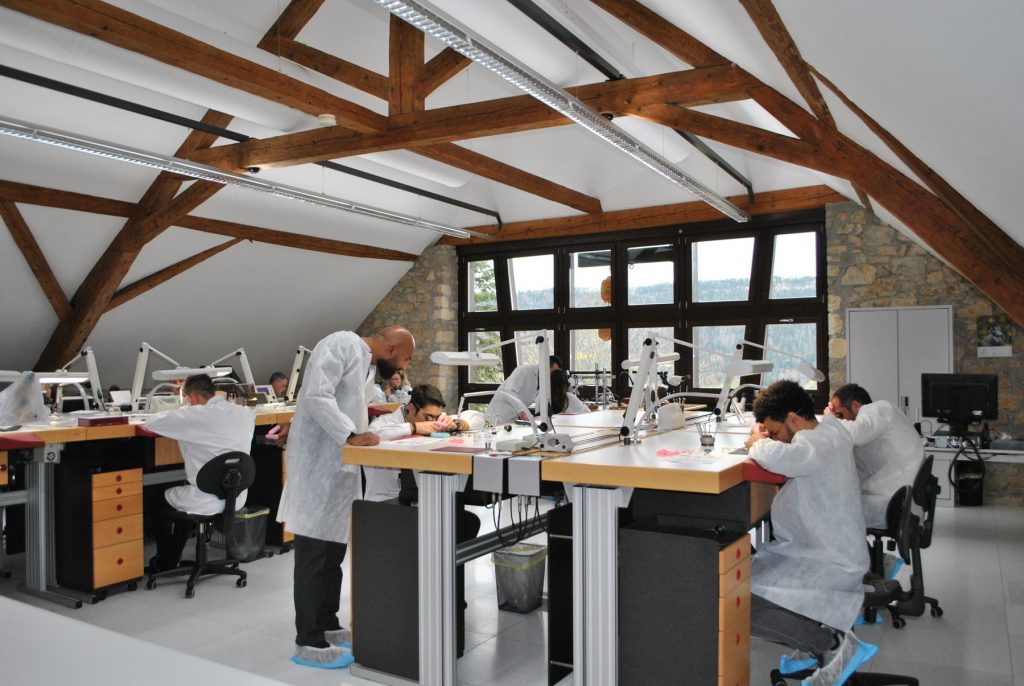
BOVET has been honored to receive more than 40 awards and distinctions, including the most coveted “Aiguille d’Or” at the Grand Prix d’Horlogerie de Genève (the GPHG, the Oscars of watchmaking) for the Récital 22 Grand Recital, in 2018, and the 2020 GPHG award for Mechanical Exception for the magnificent Récital 26 Brainstorm® Chapter Two. Such accomplishments are related to the fact that Mr. Raffy is himself a devoted collector, and is dedicated to preserving BOVET’s traditions.
In 2010, BOVET introduced the Amadeo system, which allows the owner to transform a wrist timepiece into a pocket watch on a chain (or a pendant watch) and a table clock – all without the use of any tools. In addition, the House holds a number of patents, continually pushing the art of watchmaking forward.
BOVET TODAY
The House of Bovet is a fully integrated manufacture. Mr. Raffy purchased manufacturing facilities and the Castle of Môtiers in 2006, with the aim of restoring the brand to its former glory. Completely based in Switzerland, BOVET today manufactures all its own components, and does all the assembly, including decorative arts like hand-engraving, guilloche, polishing, angling and more. In fact, BOVET makes its own spirals and regulating organs, something only a handful of companies in the worldwide watch industry can say. This way, BOVET can guarantee the quality of every step of production, resulting in incredible attention to detail.
HALLMARKS
BOVET is one of the rare companies that offers a wide range of timepieces, from the simple to the ultra-complicated, and everything in between. Its signature case is the Fleurier, with the distinctive “Bovet Bow” at 12 o’clock, and it also has the Dimier case, with the traditional crown at three o’clock.
For men, the entry point is the 19 Thirty collection, a 42mm timepiece that features a high watchmaking mechanical winding movement and an astonishing seven days of power reserve. In addition, the 19 Thirty is finished to an incredible standard, every piece and part meticulously polished and angled.
The Miss Audrey is where the ladies’ collection starts, its 36mm case incorporating the patented Amadeo system, making it possible to transform the wristwatch ihto a table clock and a pendant watch, all without any tools.
From there, the collection climbs the horological ladder, including moon phases, jumping hours, perpetual calendars, dual-timers and world-timers, and tourbillons and flying tourbillons – all developed, manufactured, finished, and regulated in-house.
Power reserve is also a key point for BOVET. “Normal” power reserve today is 42-48 hours. For BOVET’s in-house movements, the minimum power reserve is five DAYS, and goes up to 22 days. In fact, BOVET holds the world record with a timepiece from 1910 with 370 days of power reserve (more than a full year).
In addition, BOVET specializes in integrating métiers d’art into its timepiece, including elaborate hand-engravings of the case and movement, traditional enamel work, miniature-painting, incredible gem-setting and more.
A healthy portion of BOVET’s business is bespoke. The House is always willing to work with clients to create the timepiece of their dreams, whether that means adding engraved initials or a message all the way up to a complete one-off movement, case, and decorations, and everything in between.
BOVET’S FUTURE
The future of the House of BOVET is secure: Mr. Raffy was an avid watch collector of BOVET and other timepieces before he bought the business, and he is determined to maintain the House’s lofty position in high watchmaking moving forward.
“BOVET deserves to be where it is, at the highest position in watchmaking, and I will do everything in my power to push BOVET forward, optimizing my team and the artisans within,” says Mr. Pascal Raffy, owner and sole shareholder. “For this reason, I have verticalized the manufacturing so we have complete control and can be very flexible and reactive to our customers’ wishes. I am proud to have been at the head of BOVET for 20 years, and I very much look forward to the future. I love this brand and as a result pay attention to every detail and aspect of the creation of our timepieces.”
In 2022, BOVET will celebrate 200 years with a number of special events. An exhibition of historical and modern timepieces will tour the world, visiting retailers, museums, and other venues. You can also expect special timepieces that will honor the past of the House as well as point towards the future.
In many ways, the House of BOVET is the best-kept secret in the luxury watch industry. Celebrating 200 years next year is just the beginning of Bovet’s onward journey.


